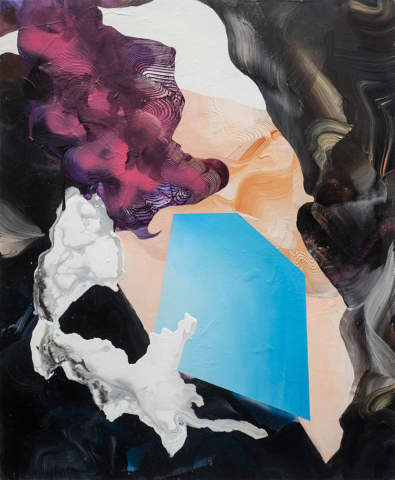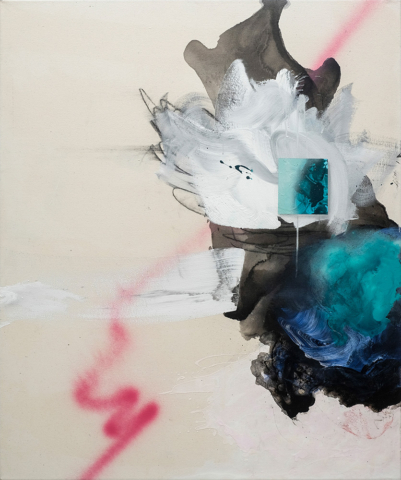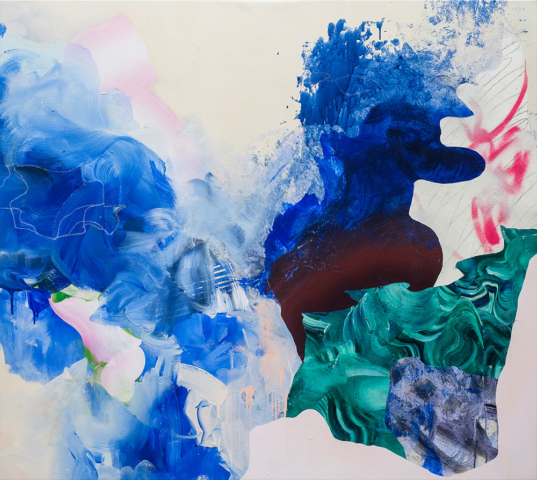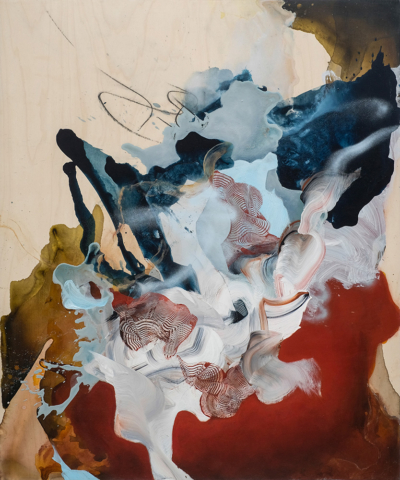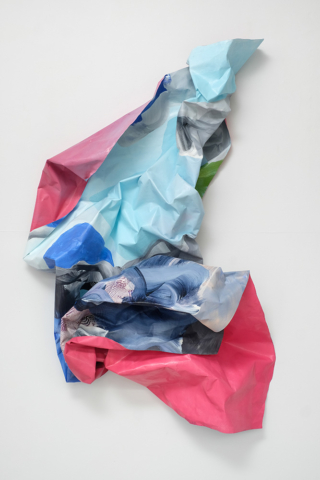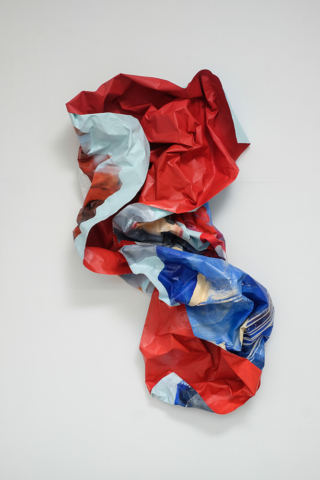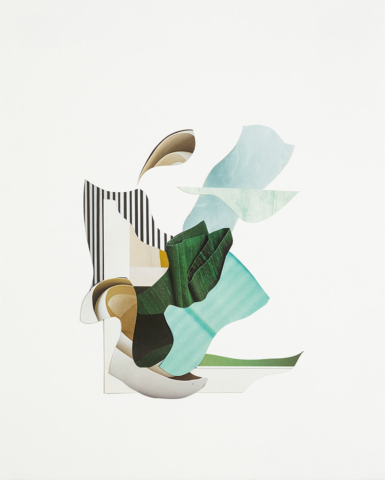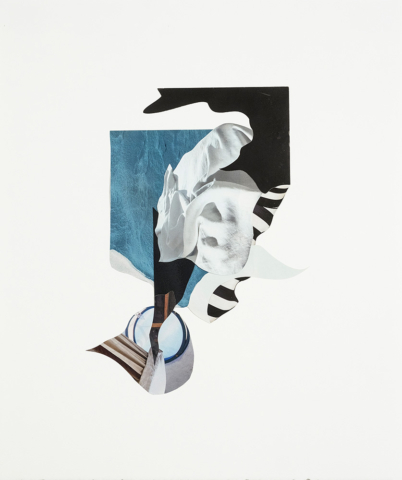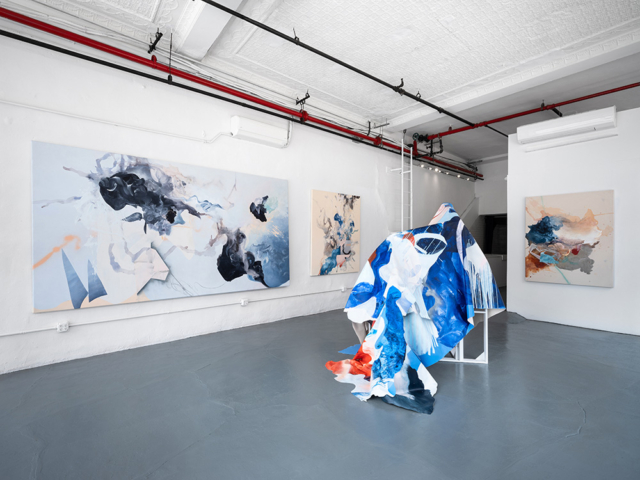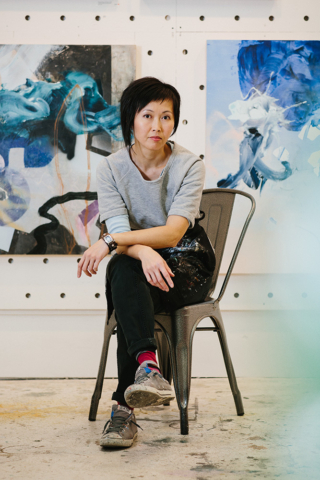Vanessa Lam
Interview by Jimon
1-What is your earliest childhood memory of making art? Drawing is what I remember doing the most at a young age. You didn’t need a lot of supplies–just a pencil and some paper. My Dad brought home a book one day on how to draw 50 horses. At the time, I would have preferred playing Lego than looking at horses but learning to draw from that book helped me understand that everything could easily be broken down into different shapes.
2-What did your path to becoming an artist look like? I’m mainly a self-taught artist. Even though I took art classes up until early university, I didn’t seriously consider it. I was painfully shy, and I didn’t have a lot of confidence in my abilities. In the end, I became a healthcare professional and art took a back seat for about ten years. During those years working, I was still trying to figure myself out. In that time, I discovered rock climbing. I was never athletically inclined, but it was the first time that I was highly motivated to learn something on my own. This was how I got to know discipline. Climbing brought me out of my shell and boosted my confidence. I finally felt a sense of accomplishment. For years I wondered what my life would have been like had I decided to go down the path of fine art. I noticed that all the things I was doing to push myself around climbing, I wasn’t applying that to art. Finally, one day I decided to take a night course at Emily Carr University of Art and Design and deliberately chose a mixed media class. In my mind, I couldn’t see myself just doing representational painting or drawing – not that there’s anything wrong with it but it just didn’t get me excited. For the first three years, I pushed myself to make a lot of work and seek opportunities to publicly share my art as much as possible. Eventually I outgrew my small home studio and moved into a shared studio space. The new studio allowed me to not only grow my practice but to connect with other local artists and find a supportive art community. In the following years, participating in an artist residency in Berlin and collaborating with Artsy for my first New York solo show became the next two pivotal experiences to impact my art practice. Both experiences gave me different perspectives to approach my work and also reassured me of my capabilities as a visual artist. It’s been seven years since I started to have a dedicated art practice. In the beginning, I always regretted not embarking this journey earlier in life but looking back I benefited from that extra time. All the skills I developed working as a professional transferred over to help build my art career. I don’t think I would have had the strength in my twenties to persevere as I do now.
3-Where did you grow up and how did that affect you as an artist? I was born and raised in Vancouver, British Columbia. Growing up my parents taught me the value of being practical. My parents immigrated to Canada from China and met each other in Vancouver. My Dad did some of his schooling in Australia after fleeing China during the Cultural Revolution. He was awarded an art school scholarship but gave that up so he could immigrate to Canada. He ended up going to trade school and worked through different trade jobs. My Mom worked nights sorting mail at the post office. Both my parents worked very hard to make sure my sister and I had opportunities that they didn’t have. My Dad tended to collect old mechanical parts and scrap materials that he claimed he would one day find a use for. Over the years he would also try different side projects like silk screening t-shirts for the family and making macrame hanging baskets. I see now that there might have been some connections to my initial interest in found objects and my need to tackle a wide variety of projects. Although my Dad could be creative in his own way, he generally discouraged pursuing a career in the arts. My upbringing made me crave for the independence that I wasn’t allowed to fully embrace. After years of working in a large, very structured organization I felt aware of how much I desired autonomy. The creative opportunities that I thought I would have in my day job just wasn’t there. My painting practice evolved to become an antidote to the turmoil I was feeling. It gave me the freedom to express my feelings more openly and in ways that I didn’t always know how to articulate. This process of painting allowed me to listen to my intuition so that I could finally be authentic to myself.
4-Where do you currently live and create? I live in Vancouver, BC and work out of a shared studio space in one of the last few remaining industrial areas in the city. The space has a great vibe and the usual quirks of being in a warehouse type space- cold in the winter and hot in the summer.
5-How would you describe Vanessa Lam the artist? Adventurous, determined and sometimes impatient.
6-Do you have a motto on how to live life? Fail harder. I always tell myself to just try because you never know. If I didn’t take that approach, I wouldn’t have won the opportunity to work with Artsy. I wasn’t even going to apply in the beginning, but I decided to send in a submission at the last minute. What did I have to lose? Everything can feel like risk when you don’t know the outcome. I try to think about what I can do that are small manageable steps and not be overwhelmed. Sometimes it is scary, and I just have to take the leap of faith. I have lots of ideas that didn’t work and other ones that did but I wouldn’t have known unless I made it.
7-You have this term that classifies your work as “automatic painting” can you explain what it entails? I paint from how I feel in the moment, what comes out of me automatically. It’s about being spontaneous– to just paint without over-thinking and follow what your instinct tells you to do. I often practice making a variety of loose gestural marks through quick sketches. I think about different sizes of marks, shapes, the application of light or heavy paint. I also use a mix of different materials ranging from acrylic paint, ink, graphite, charcoal, spray paint to pastel. It is very much about focusing on the process rather than just the outcome. I apply the same spontaneity in creating new forms in my collage works. This helps give me structure I need sometimes and to also inform the shapes in my paintings.
8-What influences you as an artist? To me everything is interesting. I can’t always go traveling so I try to take notice of things around me from being outdoors and my everyday surroundings. I might be drawn to the color of rust on a piece of scrap metal laying on the roadside or the dried paint pattern on my palette. I love to read and take notes of passages from books or poetry that resonate with me. Other times I see an abstract shape or textile in a magazine that I tear out to keep for a future idea. I take in all these observations and try to translate the feelings I have from these experiences into my art.
9-Do you have a place/person/ thing that you visit for inspiration? I love to travel and wish I could do more. Every time I return from a trip, I always come back with lots of ideas. Berlin and New York–only because I was there recently, have such great energy and I can feel it spill into my work. When I was in Berlin, I made it a habit to see something new every day. If I see new art, I try to understand what makes it engaging for me. I tried hard to do something similar when I came back and made an effort to visit with another artist as often as I could manage. Those visits are the most inspiring and helps me stay energized in my practice and stay connected to other artists.
10-When you are not painting, where would someone find you? You can find me in the mountains either rock climbing or mountain biking. I often feel more motivated to work hard in the studio after focusing on something that is so physical and technical. I really miss not being in the forest especially during these times as I find it so rejuvenating. Before I started my art practice, I used to dream about making art and now I dream about being able to return to biking and climbing.
11-If a movie was to be made about your life, where would it ideally take place and who would the actor playing your part? I would have to say that it would need to take place in Vancouver, BC. It’s where I grew up and I want to showcase the incredible mountains that get to play in as well as support the local film industry here. It’s hard to think of an actress but I have always liked Sandra Oh from the very beginning of her career.
12-How do you describe success as an artist? What I’ve learned is that success looks different for everyone and that is what makes it challenging as there is no single measure to use. Starting late in life, I often felt this sense of urgency to “catch up” with everyone else. I think in being a self-taught artist, I am always learning and figuring out how to make my art better. It leads me to try out new materials and new approaches. This means allowing myself to go out of my comfort zone and to accept that I don’t have to be limited to making one kind of thing as an artist. I can make paintings, collages, sculptures or do installations. In the past, I was never interested in making sculpture or installation but then over time I wanted to know what it was like. It’s like I am trying to test what my “art powers” are or maybe that’s from watching too many science fiction movies. The bottom line is to trust my intuition even though the outcome may be uncertain. When I look back on where I started, I wouldn’t have known that it was ever possible to make what I make now. I see certain breakthroughs in my work with every year that passes. For me, that is a success to be able to see that my work continues to improve and progress. It’s nice that I can surprise myself. Overall, I’m still figuring out what I can do, where I can go with my work and this will constantly change. When I started this journey, there was not a lot of support or belief that I could make this happen. I would not have gotten this far without the support of my husband and fellow artists. To have my work acknowledged by peers and people that respect is something that I am extremely grateful for.
13-Name three things you can’t live without in your studio? Music, shop towels and my homemade coveralls. It is unbelievable how much paint I get everywhere.
14-If you could have dinner with 3 artists living/ dead, who would be at your table? This is always a tough one, but I would love to have Julie Mehretu, Louise Bourgeois and Nick Cave at my table.
15-How would someone find you on social media? On Instagram @adropofwonderstudio.
16-If you were asking the questions, what questions would you ask? How do you think being an artist has impacted you personally? Being an artist has made me reflect on who I want to be as a person. It filled a void in me that I didn’t even know I had. It started as a kind of mid-life crisis, questioning what I was doing with my life. It came down to addressing my suppressed desire to be an artist. When I finally voiced this thought out loud to someone, I burst into tears. It told me how important it was to me. At the same time, it also felt so futile because I had this long-standing belief that it wasn’t possible or worthwhile. I had to make a major attitude shift from blaming the world for my problems and to feel like I had the capacity to make things happen for myself. From that point on, after I started to have a regular art practice, the things that I would have previously seen as hardships, I now view them as opportunities. I don’t think I would have continued working in my day job for as long as I have had it not been for art. It really turned my life around in so many ways.
Back to List